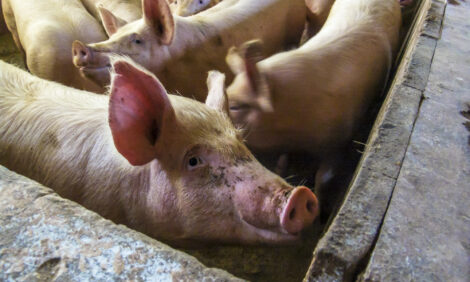



World Meat Review and Outlook
Constrained profitability in early 2003 in many major pig-producing countries has slowed growth in output in 2003 to less than 2% to a level of 95.8 million tons.
|
Tighter Supply Availabilities Limit Pigmeat Trade Gains
Production in Europe and North America, accounting for one-third of global supplies and two-thirds of world exports, is down slightly from 2002 as the result of low prices in late 2002 and mid-year weather-induced productivity losses in Europe. This decline comes in spite of export-driven gains in Canada, the world's largest single country exporter.
Pigmeat supplies in developing countries, while expanding to 60% of world output, grew by only an estimated 2% in 2003, one-half the rate that has been witnessed over the past five years. Lagging consumer demand, low domestic pigmeat prices and export constraints, particularly for products moving into the Russia Federation, slowed output growth in both China and Brazil. Conversely, in Viet Nam and the Philippines, growing demand prompted strong output gains, despite higher feed costs.
World Meat Production
Recovering beef demand in developing countries and the imposition of trade restricting policies in two major markets is limiting global pigmeat trade in 2003 to 4.1 million tons, less than 1% above 2002.
Japan and the Russian Federation, which accounted for 40% of global imports in 2002, simultaneously imposed trade-restricting measures on pigmeat in mid-2003. For the third consecutive year Japan extended its safeguards and has raised minimum import prices by 25%. This factor, accompanied by stagnant demand in China and the Republic of Korea, is reducing Asian imports (40% of global pigmeat trade) by 2%.
Meanwhile, the imposition of TRQs by the Russian Federation has raised domestic prices by 35% and is expected to reduce imports by 20%. Constrained market access is provoking a considerable scramble for market share among exporters. Rising pigmeat prices in Europe, limited use of export restitutions, and the high value of the Euro are leading to difficulties in competing with low-priced Brazilian product in the Russian Federation and elsewhere.
Consequently, EU exports are expected to decline 15%, pushing down the EU's share of global pigmeat trade in 2003 to 26%, compared with 31% in 2002 and 37% in 2000. Despite slowing supply availabilities in North America, exports are expanding with Canada benefiting from increased slaughter and processing capacity and strong import demand in the United States.
Source: eFeedLink - 5th January 2004














